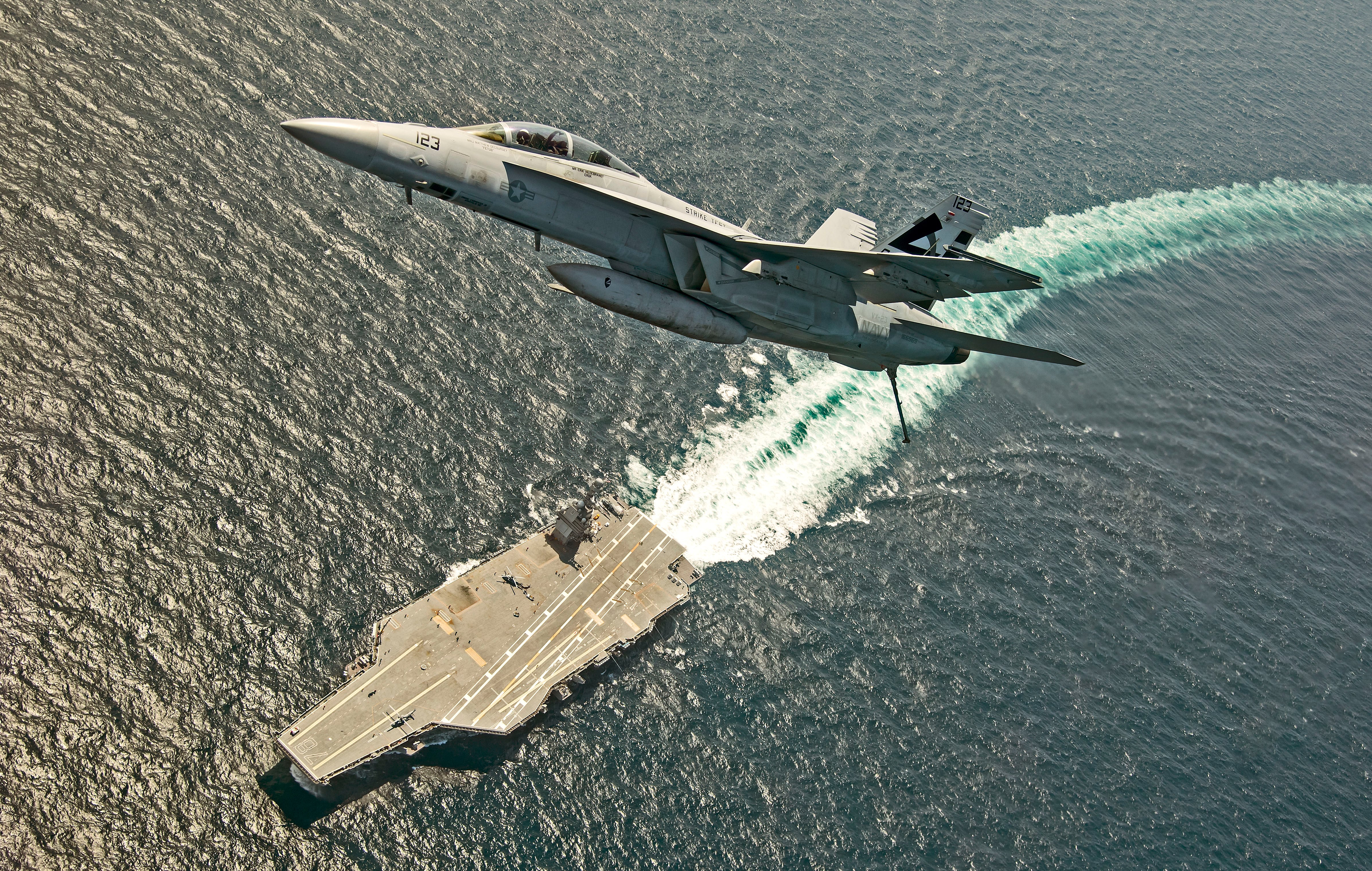The wait is over and it’s now official: The Gerald R. Ford is now officially an aircraft carrier, having recovered and launched aircraft four different times.
Not only were Monday’s flight operations a milestone for the newly commissioned ship, but it ushered in a new, high-tech era for flight deck technology. Yet it could still be a few more years before the Navy sees whether the new Electromagnetic Aircraft Launch System, known as EMALS, will meet all of its promise.
“It’s really at the beginning of the life cycle, we’re trying to assess the capability of the new system,” Capt. Richard McCormack, Ford’s commanding officer, told reporters Aug. 2.
“When you’re doing test analysis, you have to crawl, walk run. So what we’re trying to find now is a configuration that allows them to go ahead and ... determine [whether] the [EMALS] is working as it should.”
So far, McCormack said, both the EMALS and the Advanced Arresting Gear recovery systems are working just fine.
The flight deck crews, fresh from the success of four successful recoveries and launches on July 28 are itching to get another go at flight ops in the near future.
“We had absolutely zero faults on the Advanced Arresting Gear on these arrestments. It worked like a champ,” said Cmdr. Thomas Lott, the Ford’s “Air Boss” in charge of flight operations.
“And EMALS worked like a champ,” he added.
RELATED

But the system isn’t expected to be fully capable for another couple of years. In 2014, it was discovered in testing at Lakehurst, New Jersey, that fully loaded aircraft carrying fuel were experiencing unacceptable load levels on their wings during launches.
The fix is a software upgrade for the EMALS what won’t be installed until 2019, during the ship’s post-shakedown availability. Until then, launching aircraft is not restricted, but not any with heavy fuel or bomb loads.
Getting the nod to fly into the history books was Lt. Cmdr. Jamie Struck, whose callsign is “Coach,” as he’s a bit older than his peers after doing a couple of hitches as an enlisted helicopter mechanic before getting a commission and naval aviator’s wings.
Now as a test pilot with Air Test and Evaluation Squadron 23, his job is to ensure new equipment is compatible with the Navy’s aircraft to safely conduct flight operations.
No stranger to the new technology, Struck made land-based catapult shots and arrested landings. Monday’s operations, though, were the first time the testing moved shipboard.
“With all the nerves going, I probably didn’t sleep the best last night,” Struck told reporters on Ford’s flight deck, just a few feet from where his aircraft hit.
“The ship is beautiful, it definitely looks different from overhead and from during the approach, it looked a bit different,” he said. “It’s wider and the island is a little different and there’s a lot more real estate and that helps the deck crew and helps us.”

His aircraft was assisted in its glide slope through another new technology known as the “magic carpet,” but he said that both the arrested landing and his catapult shots felt different from the legacy systems on Nimitz-class carriers.
“The arresting gear, yes it felt different,” he said. “It’s electrically controlled and it’s designed to alleviate the landing load on the aircraft, so that wire is always going to run out to a certain distance.”
“It’s got a catch phase and trap phase — the catchphrase it grabs you, it feels just like the legacy gear. But it kinds of lets go a bit and then, toward the end of the run out, it grabs you again.”
Shot off the deck felt different, too.
“With the old steam catapults, there’s all that steam, that energy built up and as soon as that hold-back lets go, it can be kind of violent, a lot of bouncing before you get off the deck,” Struck said.
“EMALS was different, it’s electromagnetic. And the hold-back release was less abrupt than what I’m used to, which is good. And the acceleration all the way to the end of the strip, the stroke was smoother but the performance was awesome.”
Struck called the four landings and catapult shots the “highlight of my career so far.” But he admitted that he felt the pressure as it was happening.
“To be coming down onto the boat and have so many eyes on you — the pressure,” he said.
On and below deck, the enlisted crews who have trained for as many as four years for that moment said there was a feeling of confidence as they prepared for their first flight operations.
“There was so much energy in the air that when the aircraft first arrested, it was almost like a scene from ‘Top Gun’ at the end where everybody was pumping their hands ― they’re getting really excited,” said Aviation Boatswain’s Mate (Equipment) (AW/SW) Jeremy Stoecklein.
With the landing done, all eyes turned to catapult one on the starboard side of the ship’s bow for the first launch. Slowly and methodically, the crews did their checks, taking longer than they would normally to ensure everything was right.
Once Struck’s aircraft was airborne, any anxiety turned to joy and the deck crews and sailors below decks controlling the gear “hugged and shook hands and were yelling with excitement.”
“After that, it was just, ’Let’s do it again. Let’s do it again.” Stoecklein said.
Mark D. Faram is a former reporter for Navy Times. He was a senior writer covering personnel, cultural and historical issues. A nine-year active duty Navy veteran, Faram served from 1978 to 1987 as a Navy Diver and photographer.









